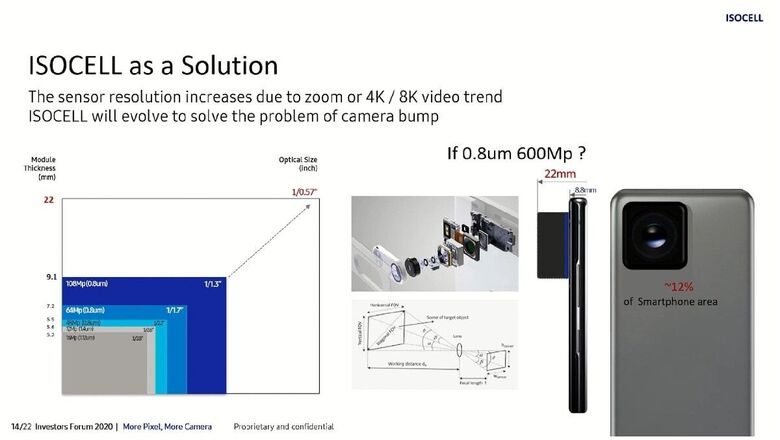
views
A decade ago, you were probably happy that the phone you bought had a camera. About five years ago, you’d have been happy to have a 12MP camera at the back of your phone. Today, you would find phones that have 100MP sensors, and up to five cameras at the back. All of this really shows how smartphone photography has evolved, but nothing has quite sounded absurd, impossible and beyond the reach of dedicated mirrorless cameras. Samsung, the largest smartphone company in the world by shipment volume, has apparently chosen to do just that, by working on a smartphone camera that would feature a massive lens and a whopping 600MP image sensor.
Akin to double superlative adjectives, a 600MP smartphone camera would almost sound like things taken a bit too far, but before we go entirely skeptical, it is important to note what the advantages of such a system would be like. Shown as a schematic that was seemingly part of the Samsung Investor Forum 2020, Samsung’s estimate shows a 22mm thick image sensor that measures 1.75-inch, thereby finally surpassing the limitation of smartphones only being able to house sensors smaller than the 1-inch-type units that are seen in basic point and shoot or mirrorless cameras.
The thickness would be a resultant of the sensor’s physical make and pixel density, even with a 0.8um pixel size. Just the one sensor, along with its paired lens, would take up 12 percent of the smartphone’s circuit board and rear panel, and stick out like a massive box at the top. Therefore, it is clearly shown as a technology that is not accessible or practical at the present moment. However, Samsung’s investor presentation slide also presents ‘ISOCELL as a solution’, suggesting that Samsung aims to evolve its camera business into an on-demand, made to order camera sensor manufacturing line that can suit the need for various smartphone OEMs.
It also suggests that Samsung is working on developing the 600MP sensor in its labs by developing the appropriate sensor density technology. Samsung has already used ‘nona-binning’ – a technique that has Samsung fusing nine individual pixels into one giant pixel, therefore deriving more details, data and 12MP stills from its 108MP Isocell camera sensors. With a 600MP sensor, it is difficult to imagine the net resolution of a compressed JPEG, and how far can pixel binning technology advance while negating signal noise and other engineering barriers.
While the idea of such ludicrous resolution sensors sound ridiculous to us right now, it might just be a regular feature in future, the way 48MP sensors are to us today. In many ways, a sensor such as this Samsung Isocell 600MP sensor may just succeed in pushing engineering and implementational barriers of mobile imaging, therefore improving aspects such as sensor crop for high resolution smartphone zooming, and RAW, high-bitrate 4K and 8K video output. If Samsung actually succeeds at this, would we ever need a dedicated camera again?
Read all the Latest News, Breaking News and Coronavirus News here


















Comments
0 comment